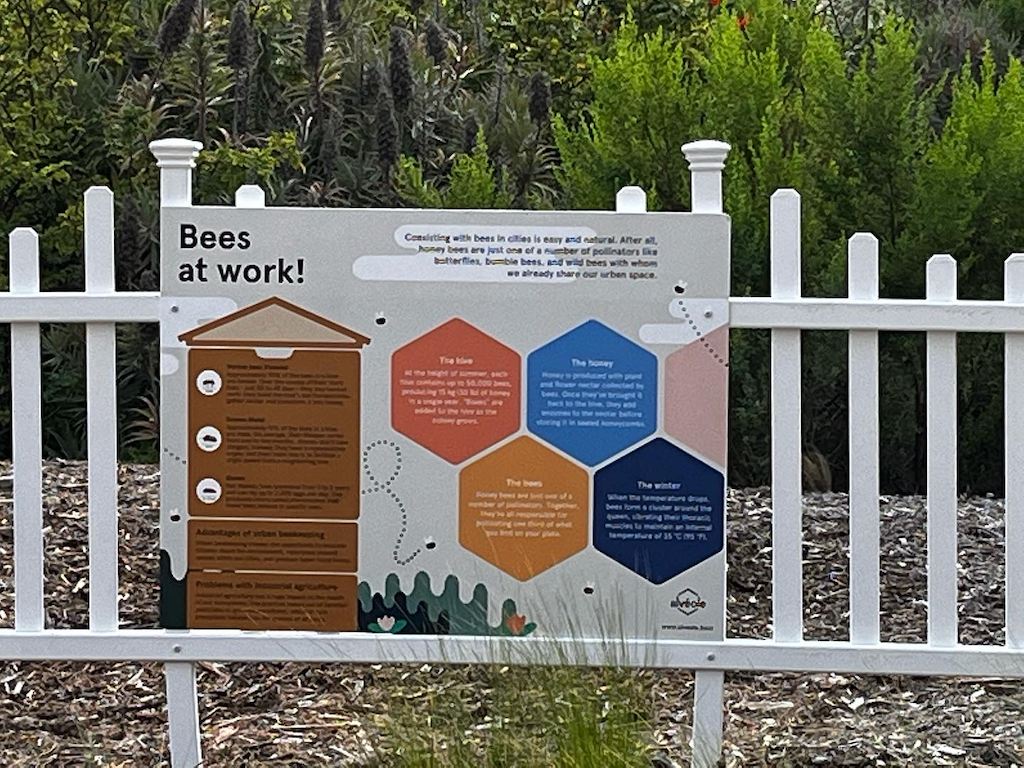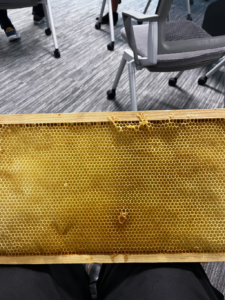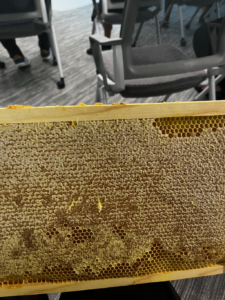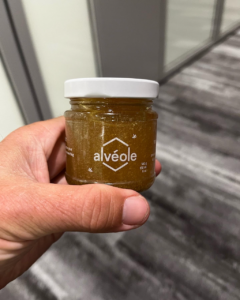The property management firm that owns the building that my company is in engaged with a bee keeping service earlier this year to place and maintain a bee hive on their property (they own a reasonable amount of real estate in the Del Mar/Carmel Valley area). As I understand it, you pay the service to maintain the hive and in exchange they will provide workshops and educational events for the client.
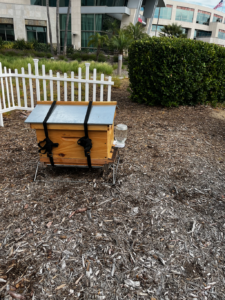
Because of this relationship, I had the opportunity today to participate in a workshop to extract honey from the comb from one of the company’s hives. We learned a great deal about the bees, their lifecycle, and how they go about producing the honey. Basically, the bees harvest nectar from local flowers. Honey Bees have two stomachs, one is for storing nectar and is referred to as the honey stomach. In this stomach the honey starts its creation, both by enzymatic modification as well as the dehydration of the honey. When the bee returns to the hive it engages other workers to continue processing the nectar. At a point in the process, the developing honey is placed into comb. The bees then begin a process of dehydrating the honey (by beating it with their wings). When the honey reaches a water content of 17.8% (precisely), the bees stop and seal the comb with wax produced from their wax glands.
Once a year the honey is harvested from the hives. Most have seen the wooden frames that are used in bee hives. The frames are approximately 2×1 feet. The frames can hold 5-6 pounds of honey (there are effectively two sides as the comb has two sides).
The first step in the process is to remove the wax caps from each side of the frame. This is accomplished using a simple scraping tool. The trick is to not cut too deep and risk removing too much honey along with the wax. Below is a video of me removing a bit the wax “cap” from one side of a frame.
After the wax cap is removed, the next step is to place the frames in a centrifuge. This is then spun to force the honey out and into the bottom of the centrifuge. Two frames are placed in at a time. Since honey is on two sides of the frame, once one side is emptied, the frames are rotated and spun to extract honey from the other side.
After the extraction has been completed, the honey is poured out of the centrifuge through a strainer to remove any residual wax. This is then poured into jars!
